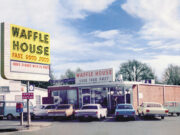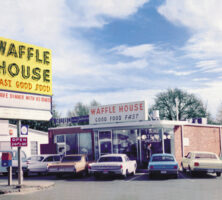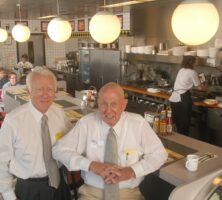Working under the enduring slogan of “Good Food Fast,” the Norcross-based Waffle House restaurant chain celebrated its fiftieth anniversary in 2005. Since its inception, Waffle House, open twenty-four hours a day and seven days a week, has grown to become America’s second-largest family-style restaurant (behind Denny’s). Waffle House has served more than 2.5 billion customers. The Waffle House system includes more than 1,400 restaurants in 25 states; about 675 restaurants are operated by the company, and the remainder are franchises. In 2004 Waffle House reported $415 million in sales.

Courtesy of Waffle House
Established in 1955 in the Atlanta suburb of Avondale Estates, in DeKalb County, by neighbors Joe Rogers and Tom Forkner, Waffle House—with its retro-style dining rooms, where customers can watch their meals being prepared—employs some 30,000 people and provides “comfort food” for about 160 million customers a year.
The restaurant’s featured dish is, of course, the waffle, and company officials estimate nearly 500 million orders have been filled since 1955. Other popular menu items include the hamburger; T-bone steaks (more than 10,000 served per day); eggs (Waffle House customers eat 2 percent of the total eggs produced in America); grits (more than 1,600 tons served per year); coffee (95 million cups served annually); and hashbrown potatoes, which can be served many ways but seem to be most popular when they are, in Waffle House lingo, “scattered, smothered, and covered.” (“Smothered” means “with onions,” and “covered” means “with cheese.”)
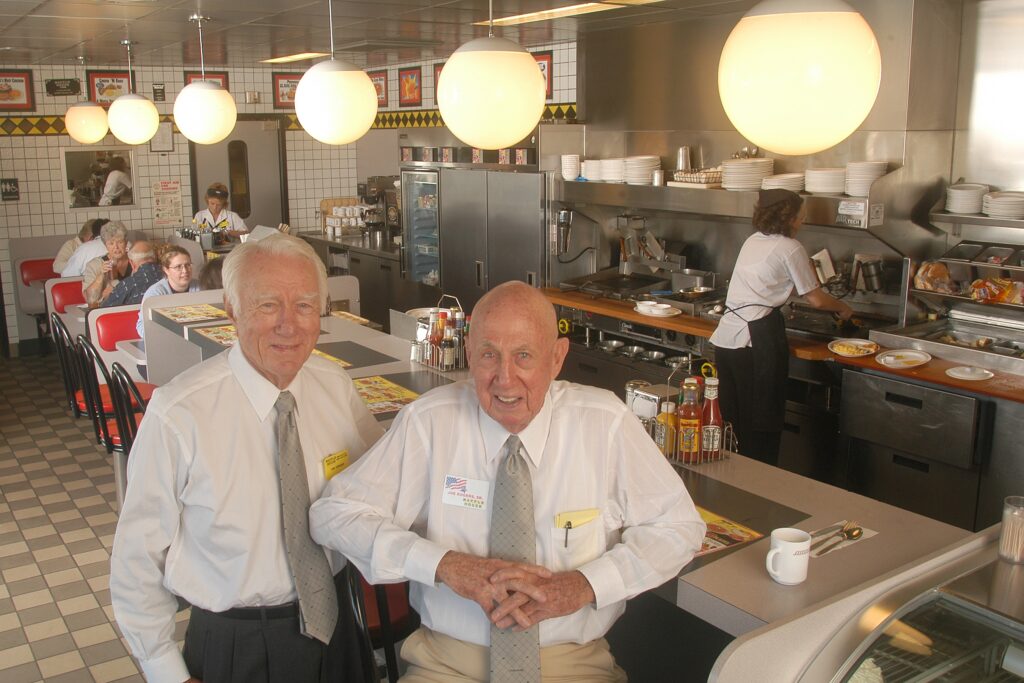
Courtesy of Bill Lisenby Photography
Until 1973 the company was made up of about 100 restaurants and restricted its locations mainly to the Deep South (opening a new diner only when Rogers and Forkner had the money and trained personnel to do so). After Rogers’s son, Joe Jr., took control of the company, Waffle House began expanding, although the look and quality of the restaurant has never really changed.
With the help of a number of well-known Waffle House fans, the restaurant has worked its way into the cultural fabric of America. The southern comedian Jeff Foxworthy has long been a fan of the Waffle House, and in the 2003 film Blue Collar Comedy Tour—The Movie, he and his colleagues Larry the Cable Guy, Ron White, and Bill Engvall were filmed eating at a Waffle House. The restaurant also made a cameo appearance in the Britney Spears movie Crossroads (2002) and played an integral role in the comedy Tin Cup (1996), which starred Kevin Costner, Don Johnson, and Rene Russo. The South Carolina–based rock band Hootie and the Blowfish released a CD in 2000 entitled Scattered, Smothered and Covered, with a photo of a Waffle House prominently placed on the album’s cover, and the restaurant’s popular hashbrowns were showcased on a Food Network episode of Sara’s Secrets, starring Sara Moulton, a cookbook author and television chef.
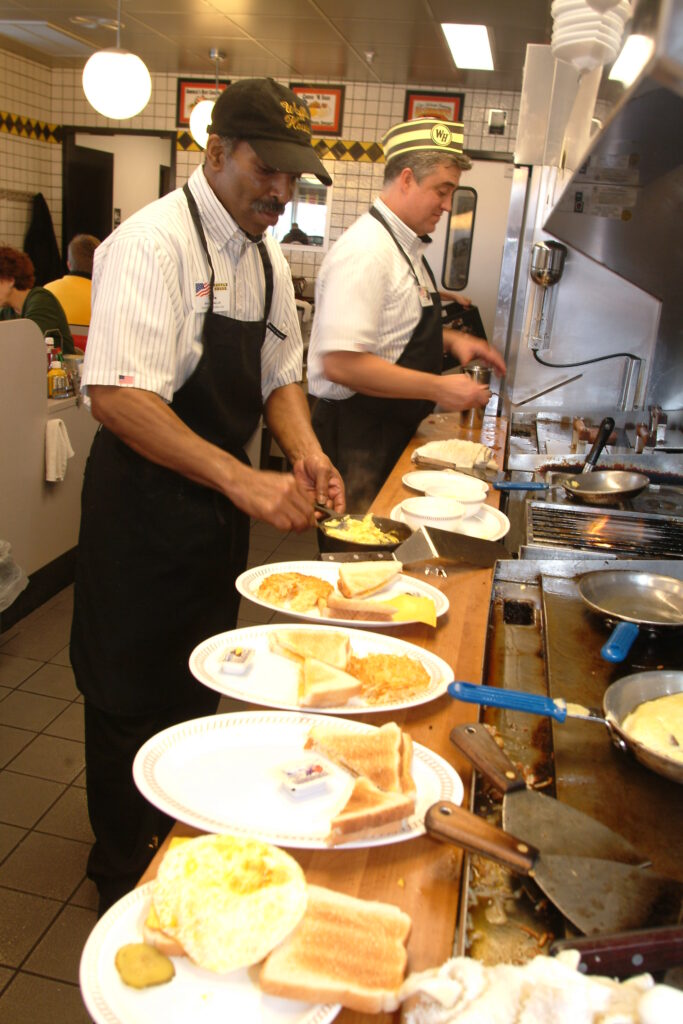
Courtesy of Bill Lisenby Photography
The jukebox has been an important fixture in Waffle House lore, and in 1984 the company produced its own song—”Waffle House Family, Part 1″—for play in restaurants. Other songs have subsequently been released, including “844,739 Ways” (referencing the many ways to prepare a hamburger), “Special Lady” (dedicated to female employees), “It’s Waffle House Time,” and “Make Mine with Cheese.”
In addition to its own Web site, thousands of sites are devoted to the Waffle House, with content ranging from anecdotes and recipe tips to political commentary, poetry, essays, and news on various customers who were so rooted to the restaurant that weddings and even funerals have been held there.
Waffle House restaurants in Atlanta were among the first restaurants to serve Black customers. Following the 1968 assassination of Martin Luther King Jr. in Memphis, Tennessee, riots broke out in some cities, and many Atlanta businesses closed out of fear of similar rioting. Waffle House did not close, however, and cofounder Rogers later was thanked by Black leaders. In early 2005 a group of Black citizens in four states filed discrimination suits in federal court, claiming systematic discriminatory practices and violations of civil rights laws. According to the Atlanta Business Chronicle, more than twenty federal cases have been filed against the company, but in two of the most recent cases, juries found no acts of discrimination.


